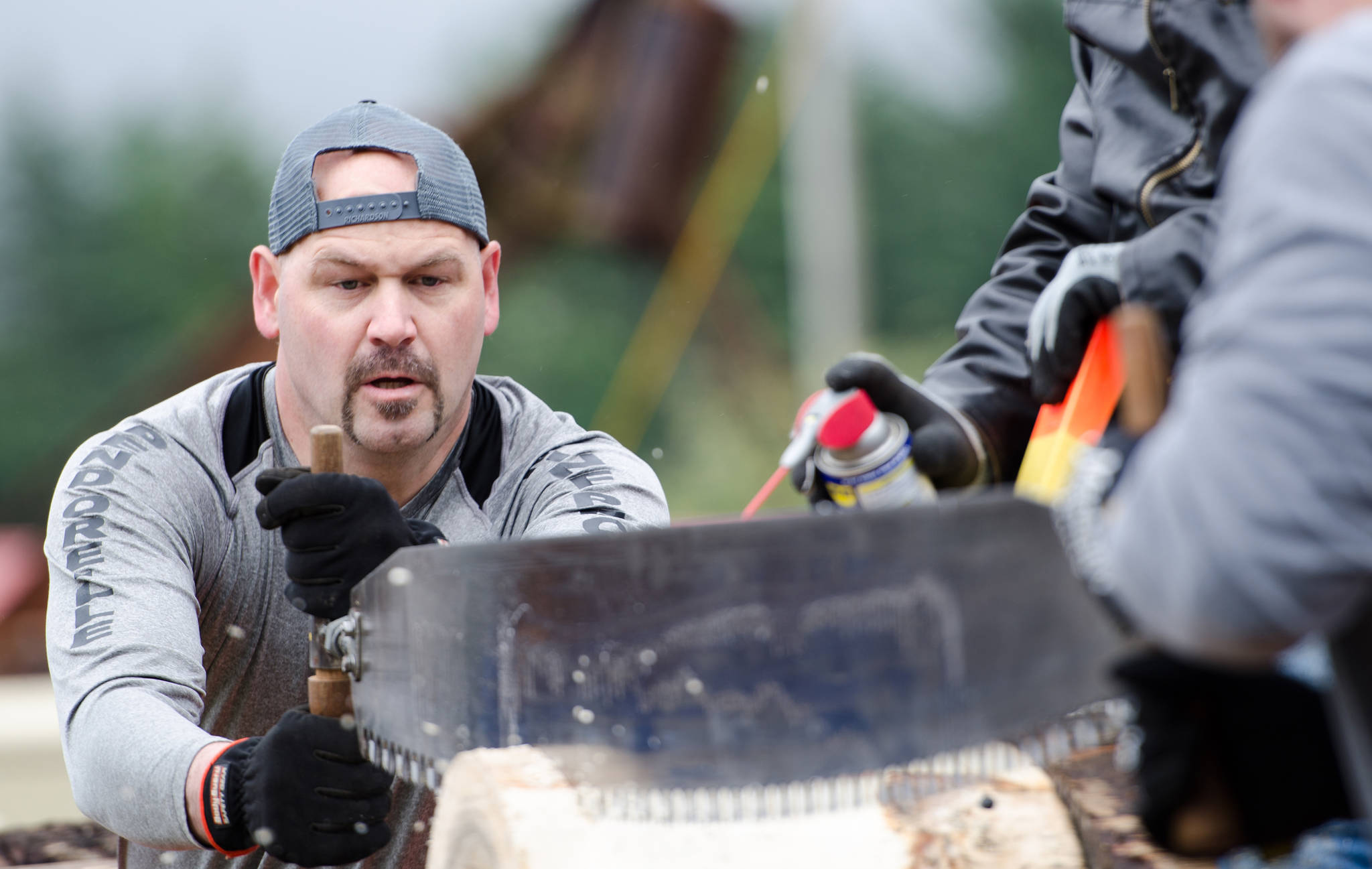The Hoys haven’t missed a single Gold Rush Days since they moved to town in 2011, when Dominic took a geologist job at Kensington Mine.
“It’s the only way for families to meet families that I know of,” Dominic, a Juneau-Douglas: Yadaa.at Kalé grad and father of three, said. “The hockey team has been huge, the figure skating for my daughter’s been huge, the music in the high school was huge for my oldest daughter. So for my wife to meet other ladies in the community, outside of church, this is it, this is our community.”
Dominic has watched his family improve each year in the mining and logging competition, which is held each year at Savikko Park in Douglas. It’s taking place this year on June 22-23, and is a free community event.
Last year, his wife April and their children Abigail, Dalton and Allison combined for eight medals.
April placed first in the women’s stock power saw bucking, an event in which contestants chainsaw through a log as quickly as they can. April completed the task in just 32.88 seconds to defeat Alea Oien (36.43 seconds) and Ursula Whitemore (45.68 seconds).
Not bad for someone who hadn’t picked up a chainsaw until a few years ago.
“You’re just kind of thrown in the fire sometimes,” April said. “But it’s good, it’s fun, it’s all out of love and friendship.”
Axes, shovels and saws aren’t typically April’s thing. Instead, you might spot her in a dance studio taking ballet classes.
“It’s the one time you’ll see her in her Xtratufs in public,” daughter Abigail, 20, said.
The log roll and dozens of other mining and logging events make up a big chunk of Gold Rush Days, which was started in 1990 by JP Tangen, John Sandor and Roger Griffin. The purpose was to give publicity to local miners, according to Jerry Harmon, president of the Gold Rush Commission.
“When we first started Gold Rush, we wanted to bring families together to meet the miners and present ourselves as no different than anyone else,” Harmon said in a preview Empire interview. “We wanted people to know we go to church, we have families, that we fish and we hunt just like everybody else. We wanted to have competitions set up to show people how mining and logging work. Now we have it so anybody that would like to be a miner or a logger for a day can participate even if they have not mined or logged a day in their life.”
For the Hoy family, dad Dominic hasn’t fared too badly himself at the competition. Last year, he was named “Bull of the Woods,” an honor bestowed to the most outstanding logging competitor, after coming in the top-three in six logging events.
Oien was named “Babe of the Woods” and “Best Female Miner” and Eddie Petrie earned “Best Male Miner” honors.
Dominic said he grew up around the logging industry; his parents worked as logging cooks in Southeast Alaska. After high school, Dominic went to New Mexico Institute of Mining and Technology and launched his mining career.
“I knew I needed to get an education so I went to get trained in oil, thinking I was going to go up north and do the pipeline thing and I got recruited right out of school to go into mining,” Dominic said.
Now decades later, it’s a career that’s served him and his family well.
“Good people, that was mostly the thing was the community of miners were just solid, solid folks,” Dominic, 45, said. “You know what you’re getting when you walk in.”
His family treats the annual Juneau Gold Rush Days as one big icebreaker and a chance to mingle with other families with mining and logging connections.
It’s not just a 9-5 job, April said.
“So much of their life is with their co-workers,” April said. “So you really only see those people at Christmas parties, but at Gold Rush Days, it’s people from both Greens Creek and Coeur (Kensington Mine).”
She said it pays to stick with the competitions.
“Every year you come out, you get a little more comfortable,” April said. “I was probably last place in absolutely everything the first three years.”
• Contact reporter Nolin Ainsworth at 523-2272 or nainsworth@juneauempire.com.

